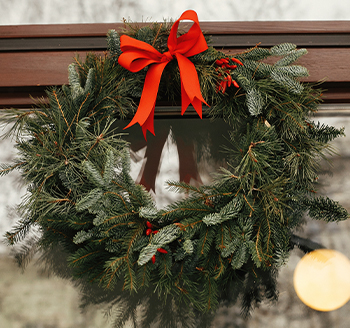Did you know that Michigan farms grow more types of fruits and vegetables than most other states in the country? As interest in fresh local products has grown, more of these fruits and vegetables are being sold in Michigan for fresh consumption rather than being processed or exported. The advantage of local produce is that it can be harvested and served at the peak of freshness. Buying local produce, whether through distributors or directly from farmers, supports our local farm families and Michigan’s economy. While not all of the fresh fruits and vegetables that you will find at Ruhlig Farms & Gardens are Michigan grown, we strive to provide the freshest products that we can find. We hope that you will stop in and see all that we have to offer.
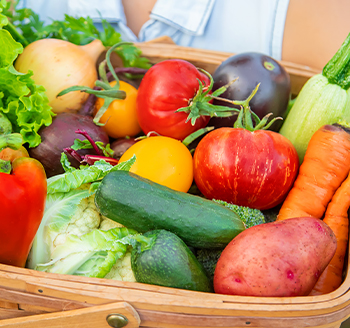
According to the USDA, 10,700 acres of asparagus were harvested in Michigan in 2009 (total U.S. harvest was 29,200 acres). Whether you enjoy your asparagus grilled, steamed, or in the deep fryer, nothing starts off summer like the fresh taste of Michigan asparagus. This tasty little vegetable can be found in Michigan during the months of May and June. Asparagus is best kept cold and should be served as soon as possible to taste all of its great flavor.
There is no better way to start a meal than with a crisp green salad. Many different varieties of lettuce are grown in Michigan and are produced all season long. As a matter of fact, did you know that lettuce is the most produced vegetable crop grown in the United States? Pick some up for dinner tonight and enjoy the wonderful taste of this fresh vegetable.
Rhubarb, although most commonly referred to as a fruit, is really a vegetable. This unique stalk-like vegetable is recognized by its vibrant red color. Remember when choosing your rhubarb for your delicious baked pies, the redder the stalk, the sweeter the pie!
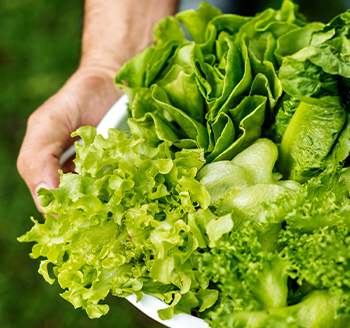
Strawberries are the first fruits to ripen in the spring. They are low fat and low calorie. They are also a great source of vitamin C, fiber, folic acid, and potassium. The Michigan strawberry season is a short one, so be sure to get them while they are here.
Many other fruits and vegetables grown in Michigan are ready in June. We have broccoli, cauliflower, cabbage, kohlrabi, greens (mustard, turnip, collard, & kale), spinach, turnips, green onions, beets, radishes, and several varieties of peas. Also ready are cucumbers, pickles, yellow summer and zucchini squash. June also brings us several different types of fresh herbs – basil, chives, cilantro, dill, mint, oregano, sage and thyme.
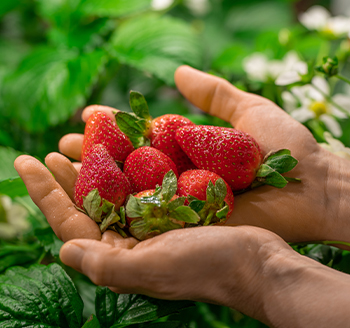
It is a special summer treat to stop at a roadside stand and buy some fresh-picked corn. As soon as it is picked, corn’s sugar begins to convert to starch. This process lessens the corn’s natural sweetness. The less time from the field to the fire, the better. Sweet corn should be cooled as quickly as possible to prevent the loss of sugar. Fresh corn is best when eaten the same day it is picked. When purchasing corn, look for bright green ears with a golden brown silk. Kernels should be tender and come all the way to the ear’s tip. Rows should be tightly spaced. All of the sweet corn we grow is iced and hydro-cooled(chilled water bath) to keep it at the peak of perfection, to ensure that you can enjoy it the way it was meant to be tasted.
July also gives way to other types of delicious fruits and vegetables. You should start to see locally grown green bell peppers, as well as a wide variety of sweet and hot peppers. Jalapeno, Sweet Banana, Cayenne, Hungarian Hot, Cubanelle, and Serrano, just to name a few. Peppers come in many different sizes, shapes, and colors. They also come with many degrees of heat. They can range from the very hot, as in a Habanero, to the very sweet yellow and red bell peppers. Peppers can be prepared many different ways. They can also change the flavors of your favorite recipes by adding a touch of sweet or by spicing it up just a little. One of our favorite ways to prepare peppers is by stuffing them. The next time you make your stuffed peppers, try using a different type of pepper than you would normally use. We suggest a Pablano pepper, for those who like a little heat, or a sweet yellow bell for those of you who don’t.
Home of the National Cherry Festival, Michigan produces 70 to 75 percent of the tart cherries grown in the United States. Michigan produces 200 to 250 million pounds of tart cherries; the U.S. crop is 250 to 300 million pounds. Although a cherry tree can grow almost anywhere, the quantity and quality of its fruit depends on specific climatic conditions. That’s why Michigan orchards are concentrated along Lake Michigan, where the lake tempers Arctic winds in the winter and cools the orchards in the summer.
Both tart and sweet cherries ripen in July; the third week of July is usually the peak of the harvest. Most tart cherries are mechanically harvested, using a shaker to drop the fruit onto canvases, where they flow into elevators and are placed in tanks of water. Sweet cherries that are to be marketed fresh are picked by hand.
Raspberries can be red, purple, gold or black in color. Golden raspberries are the sweetest of these varieties. When picking raspberries, look for berries that are firm and dark in color. They should not be soft or mushy. Gently pull on the berry; if it does not come off easily, the berry is not ripe enough yet. Once raspberries have been picked, they won’t ripen any further.
Raspberries differ from blackberries because when picked, the stem of the raspberry remains with the plant. Blackberries, on the other hand, come away from the plant with the core still intact in the center of the berry. This is how to tell the difference between a blackberry and a black raspberry.
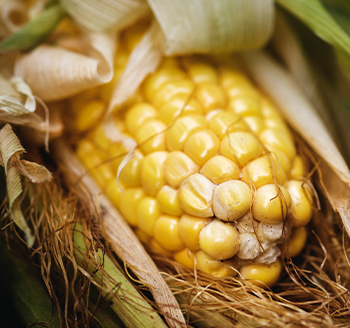

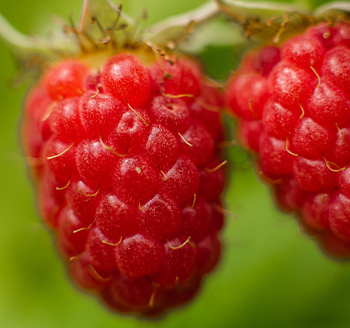
Some other produce that will arrive in our farm market in July are eggplant, carrots, celery, green beans, wax beans, garlic, apricots, and peaches.
Peaches begin to be ready at the end of July, with peak harvesting of this juicy fruit happening in August. When choosing a peach, you want it to have a strong aroma and give with soft pressure. Avoid peaches with dark spots or that feel mushy to the touch. Peaches are perhaps best known for their use in peach cobbler, a summer favorite. Peaches can also be used in breads, pies, and pastries. Try adding peaches to homemade ice cream for a flavorful treat.
July is National Blueberry Month in the U.S. July is also the month that brings those wonderful little blueberries to Michigan residents. Everyone loves blueberries whether they’re picked and eaten straight from the bush or baked into our favorite desserts. Who doesn’t love a hot blueberry muffin?
Did you know that blueberries provide us with many important nutrition and health benefits? Blueberries are an excellent source of vitamin C, dietary fiber and magnesium. Manganese plays an important role in the development of bones and in the metabolism of protein, carbohydrate and fat.
Start your children off at a young age learning to eat fresh fruits and vegetables, and that knowledge will last a lifetime. There is a wonderful fun facts website that will help to teach children all of the wonderful things there are to know about this amazing little fruit. https://www.blueberryfun.com/
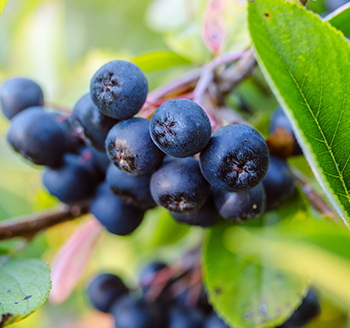
Cantaloupe, with its refreshingly rich flavor and minimal number of calories, is the most popular type of melon. It is also referred to as a netted melon because it has a ribless rind with a distinctive netted skin. Here in Michigan, we grow a type of Cantaloupe called a Honeyrock. These melons are known for their distinctive ribs and wonderfully sweet flavor. A Michigan Honeyrock will be much sweeter because it is not picked until it has reached its full maturity.
Another popular type of melon is the Honeydew. There are two types of Honeydews, one with green flesh and the other with orange flesh. The green fleshed melon is the Honeydew, while the orange fleshed melon is the Crenshaw. These melon varieties take relatively longer than most melons to ripen, however, they are also the sweetest of all of the melon varieties.
Last, but not least, is the watermelon. Watermelons come in many different shapes, sizes, and colors. They also come with or without seeds.
Though watermelon is commonly considered as a fruit, it is actually a vegetable! It is a member of the cucumber family and is kin to the gourd. The watermelon, by weight, is the most-consumed melon in the U.S. When picking the best watermelon, thump on it. If it sounds hollow, it is ripe.
There are many fruits that are brought to our farm markets in the month of August. We have blackberries, nectarines, pears, plums, and apples.
Apples come in all shades of red, green, and yellow. Did you know that apples are grown in all 50 states? Michigan is one of the top 5 apple producing states in the country. The phrase “An apple a day keeps the doctor away,” still holds true today. But don’t peel your apples. Two-thirds of the fiber are found in the peel. Antioxidants, which help to reduce damage to cells in your body, are also largely found in the skin of the apple.
Who can resist the wonderful, amazing taste of a fresh home grown, juicy tomato?
We love them mashed, baked, french fried, and as chips. The potato is the most important non-cereal crop in the world, and fourth most important crop overall. Only corn, wheat, and rice are more important. In the US, potato products are the second most consumed food overall, trailing only behind dairy products.
What’s in a name? When it comes to the yam, there is a bit of confusion. A “yam” is really a variety of sweet potato grown in the South. The USDA requires that sweet potatoes sold under the label “yam” always be accompanied by the words “sweet potato” to distinguish them from a true yam. A sweet potato looks like a potato with pointed ends. A true yam, is a starchy, less sweet edible root that looks more rootlike with twists and turns in its shape. Traditionally, sweet potatoes have white flesh. The orange-fleshed sweet potatoes grown in the U.S. have the variety name “yam”.
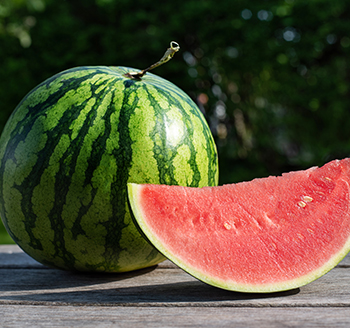
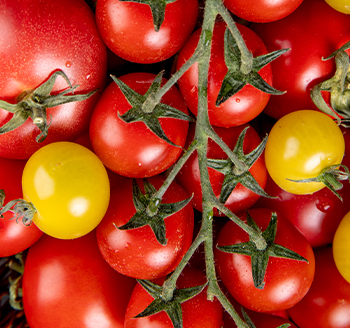
With September begins the harvesting of cranberries and grapes in the state of Michigan. Michigan has over 12,000 acres of grapes,most of which are located in southwest portion of the state. Most of this acreage is for the Concord and Niagara varieties, which are mainly used for grape juice. The wine grape production is fairly evenly split between Michigan’s southwestern counties and those around Grand Traverse Bay.
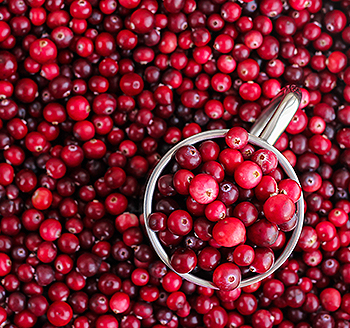
Ruhlig Farms and Gardens is your one stop shopping destination for all of your Fall decorating needs. We carry a wide variety of pumpkins, gourds, corn stalks, and straw bales in different sizes and shapes. October also brings in some different types of winter squash. Some of the kinds that we will have are Acorn, Butternut, Spaghetti, Buttercup, Dumpling, and Hubbard, just to name a few.
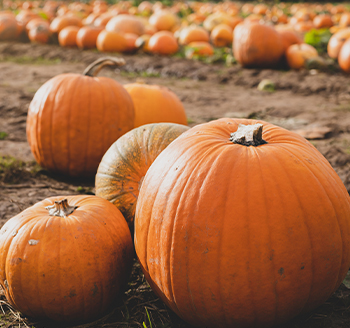
As the weather gets colder here in Michigan, our local produce may come to a halt, but don’t forget to stop by and check out all of the beautiful outdoor Holiday decorations that we have to offer! Ruhlig Farms and Gardens has a huge selection of lush outdoor greenery, swags and garlands, wreaths and grave blankets, each one unique and made by hand. Once you see the quality, you will never want to go anywhere else for your holiday decorating needs! Check out the Seasonal tab at the top of this page to learn more.
